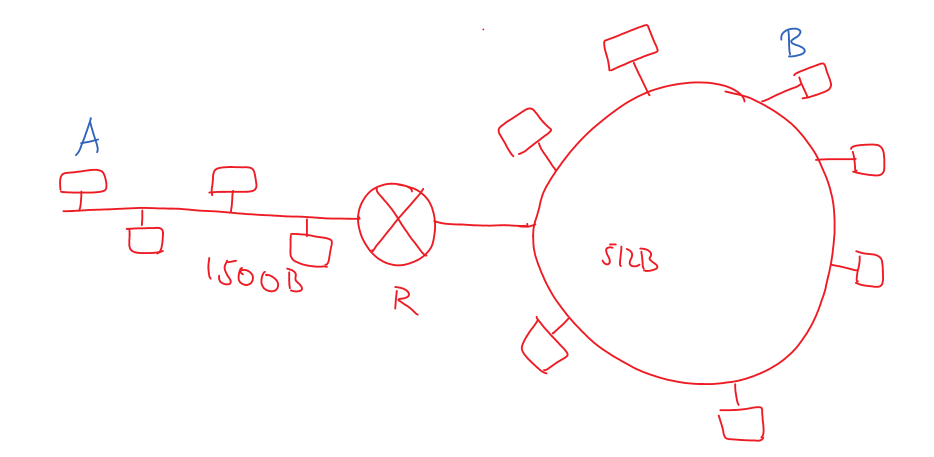Internet Control Message Protocol ICMP
For Complete YouTube Video: Click Here
This class will try to understand Internet Control Message Protocol ICMP.
We have already discussed the concepts of Internet Protocol and Address Resolution Protocol ARP in our previous classes.
Internet Control Message Protocol ICMP
Internet Control Message Protocol ICMP is for reporting errors and management queries. It is a supporting protocol used by network devices like routers to send error messages.
To understand this concept, consider a sample network shown below.

Here source A is connected to ethernet with an MTU of 1500 Bytes, and node B is connected to the token ring with an MTU of 512 Bytes.
In the above network, assume that source A wants to communicate with destination B.
Assume that source A has set the Don’t Fragment DF field to 1.
If the DF field is set to 1, the routers in between have no authority to fragment the packets.
After reaching router A, the router has to fragment the packet into 512 Bytes.
As the DF field is set to 1, router A has no authority to fragment, so A will send an ICMP message to the sender.
The ICMP message states that the packet must be fragmented to 512 Bytes for further transmission.
Now the router will fragment all the packets to 512 Bytes.
